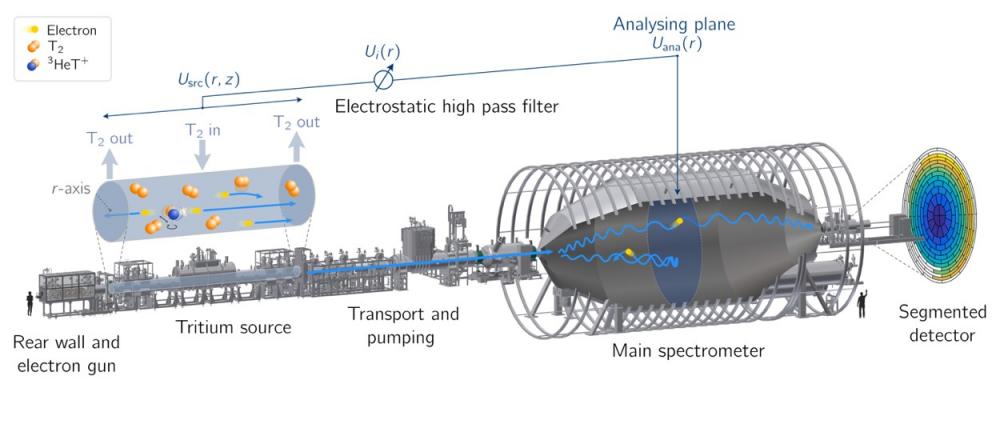The cosmic background neutrino is one of the predictions of the standard cosmological model, but it has never been directly observed. These so-called "relic neutrinos" could be captured on a radioactive nucleus like tritium. The resulting capture rate depends on the local density of relic neutrinos. Since massive neutrinos get caught by the gravitational potential of our galaxy and cluster locally, a modest local overdensity of relic neutrinos should exist on Earth. More exotic considerations could lead to more substantial overdensities. The KATRIN experiment published in June 2022 in Physical Review Letters its first search for relic neutrinos based on analysis of data recorded in 2019. The analysis, led by an IRFU physicist, improves on previous limits by two orders of magnitude.
The KATRIN collaboration has just recently reported a new upper limit of 0.8 eV/c2 on the mass of neutrinos. The KATRIN spectrometer also has a strong potential to search for new, so-called "sterile" neutrinos, based on a fine analysis of the tritium beta decay spectrum. The collaboration has just published its new results in Physical Review D based on the first two data campaigns acquired in 2019. This work reveals no evidence of a fourth neutrino, and KATRIN may well be a key player in clarifying the anomalies observed by some neutrino oscillation experiments over the past 20 years or so.
The KATRIN (KArlsruhe TRItium Neutrino Experiment) located at the Karlsruhe Institute of Technology (KIT) has just crossed a symbolic threshold. In a paper published in the prestigious journal Nature Physics, the collaboration reveals a new upper limit of 0.8 eV/c^2 for the mass of neutrinos. This result is of fundamental interest for both particle physics and cosmology.
At Irfu, neutrino physics is studied using different sources such as reactors, accelerators and radioactive sources.
Irfu teams have been engaged for several decades in a long quest to study the neutrino in all its aspects, to understand its place in the Standard Model of particle physics and even more, but also its contribution to the evolution of the Universe since its first moments. The traditional summer conferences organized last year were an opportunity to measure the progress made by the armada of international experiments with which our institute is working to achieve this ultimate goal. A look back at year 2021, full of lessons and promises for the future...





